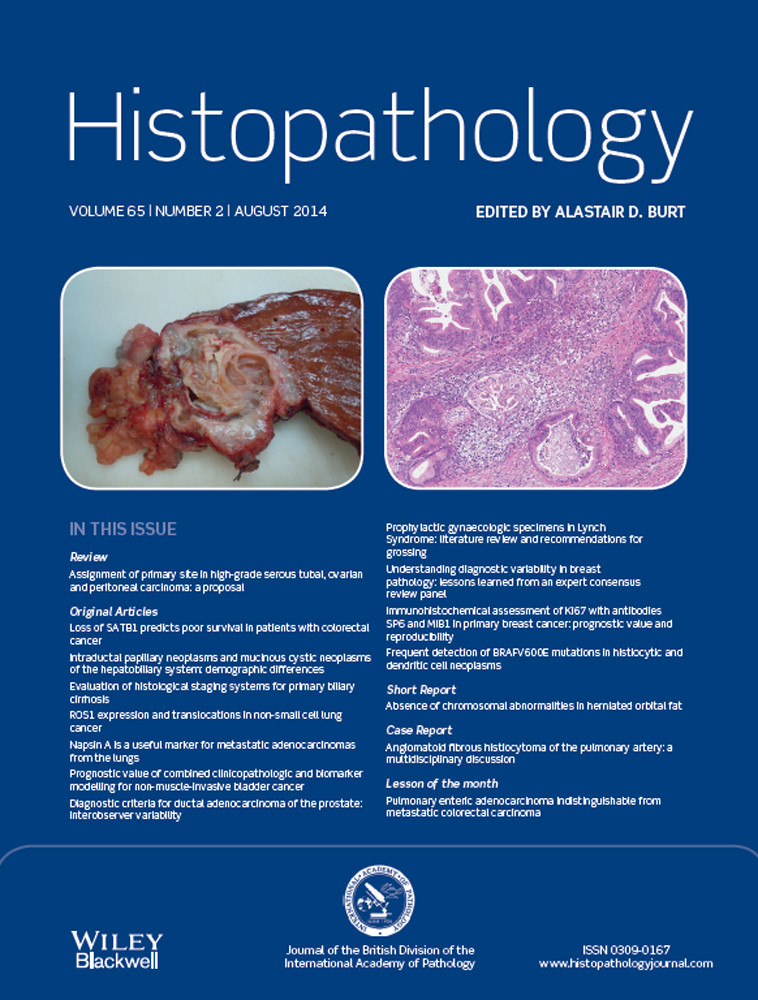The prognostic value of combined clinicopathological and biomarker modelling for non-muscle-invasive bladder cancer
Abstract
Aims
To construct a prognostic model, incorporating clinicopathological variables and biomarkers, to predict recurrence, progression and cancer-specific mortality for patients who have undergone transurethral resection of non-muscle-invasive bladder cancer (NMIBC).
Methods and results
A total of 12 biomarkers were evaluated using immunohistochemical analysis of tissue arrays of 605 NMIBCs. Competing risk analyses were performed to derive prognostic indices and nomograms. In addition to the 2004 WHO histological grade and intravesical instillation status, five biomarkers (i.e. Ki-67, p53, cyclin D1, cyclooxygenase-2 and heat shock protein-27) were selected on the grounds of independent statistical significance. Based on the prognostic model, four distinct risk groups were discerned. NMIBC patients with extensive lamina propria invasion (T1e) had the highest risk. Patients with non-invasive and focal lamina propria-invasive NMIBCs (Ta/T1f) with a high prognostic index showed a risk approaching or equivalent to that of patients with T1e tumours. Patients with Ta/T1f NMIBCs with low indices were mostly indolent, while those with intermediate indices had a risk in between that observed for T1e and Ta/T1f NMIBCs tumours.
Conclusions
Robust risk tables and nomograms were created to predict an overall perspective of disease outcomes, which may aid in developing individualized follow-up programmes.




